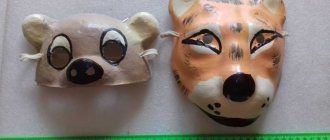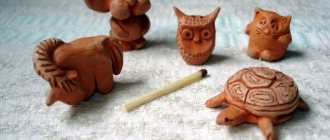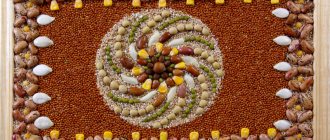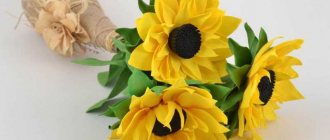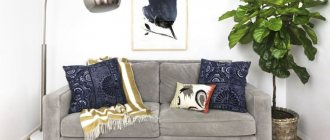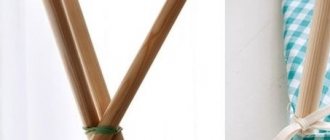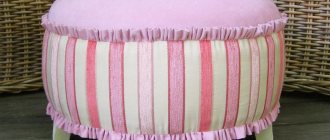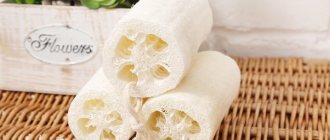Flowerpot concept
A flower pot dressed in new beautiful clothes, that’s what a flowerpot is. Translated from French, pots are “hidden pots.” This name, as accurately as possible, reflects the essence of the subject.
It often happens that housewives are afraid to replant plants or flowers so as not to damage the root system, and the pot has an unpresentable appearance. Then the position of the pot will be corrected, the plant will look new in the elegant “clothing” of the pot.
DIY ways to decorate flower pots
The marine motif - one of the most popular today - is reproduced on a clay vessel using shells, fabric and rope.
Painting on eggshell mosaics works best on a porcelain surface. Glass mosaic and lace overlays harmonize with the ceramic vessel. Glass is used as a basis for decoupage techniques and yarn designs.
Plastic containers are well rubbed and degreased, after which they are suitable for almost all decorative techniques.
It’s also useful to read: Decorating your home with your own hands or DIY
painting
The first idea that comes to mind when you see a clay pot is artistic painting . There are two reasons to buy paints and brushes for decorating clay flowerpots: if your child attends an art class or if you are looking for a way to make the interior more homely and cozy.
Study Russian national styles: Gzhel, Petrikovsky, Boretsk, Permogorsk and Gorodets painting.
Lace, burlap, fabric, twine, yarn
When working with lace, special care is required so that the glue does not flow onto the fabric surface. A clay base is ideal for decoration: a lace ribbon covers the entire surface or rim of the vessel. Otherwise, the technology is similar to pasting with fabric.
Pots dressed in knitted fabric look interesting and homey. It is important that such clothing matches the time of year.
Pasting with pebbles, millet, shells, mosaics, nuts, cones, sequins, buttons
The listed materials allow you to create mosaics and new reliefs on the prepared surface. Pasting looks especially good on small flowerpots.
Decoupage, photo wallpaper, prints on rice paper or textured cardboard, painted silk
You can apply a design not only using the decoupage technique, but also using fabric and paper elements with designs. Such a design will look like an artistic painting from afar.
Types of flower pots
Flowers are grown in almost every home. This creates a beautiful, aesthetic interior, comfort, unity with nature. In addition, house plants enrich rooms with oxygen, which is of great importance, especially in a metropolis.
Flowerpots have different purposes according to the method of placement:
- floor planters are installed on special stands, sometimes multi-tiered;
- table pots decorate shelves, window sills, tables and cabinets;
- hanging flower pots, using ropes or wires, are attached to special hooks and suspended from ceilings and upper beams;
- wall planters are located in special holders attached to the wall.
Choosing flowerpots
Having set the goal of updating the interior, one cannot ignore updating the appearance of flower pots. Lack of your own imagination is not a reason to give up the idea of decorating pots.
It’s worth going to the sites of flower growers; design sites and catalogs with photos of flower pots will amaze you with their variety.
Even from scrap materials: plastic bottles, wood, rope and much more, lovers of applied art create truly masterpieces.
What can it be made from?
Many owners of indoor plants are interested in what they can use to make a flower pot. The standard basis for the product is:
- polymer clay;
- gypsum;
- cement;
- paperclay;
- tree;
- rods;
- bottles;
- plastic buckets.
Creative people prefer to create products from scrap materials, which can sometimes be the most unexpected: a tin can framed with clothespins painted in bright colors, felt, wine corks, a leaky shoe, old dolls and even rags.
What flower pots are made from in each specific case depends on many factors. At a minimum, the product should fit as harmoniously as possible into the interior of the apartment and match the plant itself. For example, if a brutal pot made of stones is just right for a cactus, then an openwork wicker pot would be appropriate for delicate violets.
Pictures of flower pots
House plant lovers don't have to worry about choosing a unique flower pot. Its appearance can always be adjusted or updated with the help of a flowerpot.
Pictures of pots shown on the Deposit Photo or Landscape Design websites will introduce you to the variety of shell options for pots.
Note!
- How to level an area - instructions on how to do it yourself. Photos of finished works, reviews, secrets + review of simple and complex options
- Alpine slide (rock garden) ☘️ — 150 photos of ideas, new items, design, instructions, diagrams, how to make it yourself
Veranda attached to the house: review of the best projects (140 photo ideas). Instructions on how to do the construction yourself
Having chosen one of them as the basis for the design, you can always develop the proposed decor idea and add elements that you think are necessary. Fantasy will tell you how best to decorate your home so that it looks fashionable and stylish.
Requirements for containers for flowers
The most important function of a flower pot is not to decorate the interior, but to protect the root part of the plant from external influences and create a certain “island” of soil in which the bush will feel cozy and good. When choosing pots and flowerpots for house plants, you should not focus on their appearance, although this is certainly a very important factor, no matter what. But if caring for plants comes first (after all, they are also living), then it is important to pay attention not only to the appearance of the container , but also to its other features - how suitable is the pot for growing plants in it? In order not to make a mistake in choosing, and also to make a suitable and correct pot with your own hands, you need to know what the right pot for a plant should be.
Hanging planter
Amateur flower growers cannot be denied their imagination in decorating flower pots for greenhouses or open flower beds. Sometimes, a DIY hanging planter made in the garden amazes with its unusual invention.
All kitchen utensils are used: pots, old bowls, no longer needed in everyday life. You can please yourself and your household with weaving flowers in original shell-pots by using unnecessary plastic utensils and bottles.
Such compositions need to be hung as high as possible. Plants will not interfere with walking, they will not be injured by touching when passing under them. In addition, this beauty will be visible to everyone from afar.
Planters for the garden
The main difference between a flower pot and a flower pot is the lack of drainage. Therefore, you need to select options so that you can freely remove pots with plants from them without damaging them. When making flowerpots for the garden with your own hands, you can take into account all the nuances of watering and removing plants from flowerpots.
Decorating a garden with hanging flowerpots located on arches, or building a multi-tiered version in the form of a staircase exhibition, is quite possible even for those gardeners who are not particularly friendly with applied arts.
Note!
DIY garden decorations: 150 photos of original ideas and new products. Instructions with step-by-step guidance, diagrams and drawings
- Fast-growing climbing plants for the fence and garden ☘️. Review of perennial and annual plants. Photo + instructions with description
- DIY barbecue: TOP 120 photos of the best examples of work. Master class on making at home + simple diagrams and drawings
Paints
If the hostess has the ability to draw, you can decorate the flower house with painting. And what it will be: elegant Japanese drawings, strict geometric shapes, non-standard torn lines, funny polka dots or pictures from cartoons, it’s up to her to decide for herself.
If you don’t have any special drawing talent, you can buy ready-made stencils or cut them out of durable cardboard. It will not be possible to depict a complex design, but even a novice artist can easily create an unusual ornament.
Instead of paints, you can use colored nail polishes or permanent markers.
DIY flower pots
True connoisseurs of individuality do not ask the question: “What and how to make a flowerpot with your own hands?” They try to create their masterpieces by trial and error.
Before you start creating, you need to think about the functioning of the pots.
Flowerpots for a garden, gazebo or local area are made mainly from scrap materials. Old low fences are used. They are used to make original frames for large above-ground pots.
A thick block of wood looks fabulous, the middle of which has been freed up to fit the size of the pot. This is such an extraordinary unity with living nature that it evokes genuine admiration.
Rope plant pots
To create the simplest design you will need 3 pieces of thick cord, each 2.5 m long. Do-it-yourself rope planters require some skill.
Note!
Weaving willow baskets: beautiful and unusual do-it-yourself baskets. Detailed diagram of willow weaving + photo examples of finished products
- DIY gazebo - the best design ideas. Description of construction stages with step-by-step instructions for beginners + 160 photos
- Capers - TOP-150 photos of types, best cooking recipes. Application options and beneficial properties + instructions on how to choose capers
Taking a ring of small diameter (2-3 cm), we thread each cord into it so that the ring is in the middle of the cord. You need to tie all 6 segments into a knot near the ring itself.
To free your hands for work, you need to hang the ring somewhere. We tie the ropes in pairs into knots at a distance of 40 cm from the ring.
Next, we knit knots from adjacent pairs of ropes at a distance of 10 cm below the previous ones.
This type of weaving is suitable for oversized pots.
Macrame flowerpots
The technique of knotted weaving from thin rope, twine, yarn is macrame. Do-it-yourself macrame flowerpots are a garden decoration; by dressing flower pots in such a shell, we will truly create the gardens of Babylon. Everyone who gets into them will admire such beauty.
This type of weaving was invented by men. Don’t be surprised if you see the owner of the house making a similar craft.
This pot turns out to be a light and elegant item. By improving the technique of knot weaving, you will create multi-tiered flowerpots of unprecedented beauty.
These pot shells look appropriate with both large and small pots. They are secured with carabiners to hooks, which can be located on a fence, arch, or wall.
Wherever macrame flower pots are attached, they look stylish and original. This is truly a universal item.
Knitted pot
A charming flowerpot can be easily made using yarn, knitting needles or a crochet hook. Large, dense knitting will help hide all the scuffs of the old pot, and using a crochet hook will create incredibly light and elegant designs.
This decor option can be removed and washed at any time, giving the item a pristine, clean look.
If the housewife is not particularly good at knitting, a piece of sleeve from a knitted sweater the size of the pot will do. All that remains is to cut off the excess part and decorate it with additional elements: buttons, flowers, appliqué, bouquets of dried flowers or dried berries.
An excellent solution for decorating a small pot would be ordinary or terry socks.
Flower pots
Indoor flowers in beautiful flowerpots are a unique opportunity to decorate and diversify the interior of your home. Flowers, in addition to being beautiful, also ozonize the air in the room. Many gardeners know how to make flower pots. After all, it is their prerogative to decorate their favorite flowers with beautiful flowerpots.
For such products, both special material and waste materials are suitable. You should not try to quickly throw away waste building materials left after repairs. They can always be put into action. Great idea: make flower pots.
Verandas and balconies become winter gardens if heating is installed on them. All year round, any flowers, even the most exotic ones, will delight you with their fragrance and bright colors.
Flower pots are created from leather, fabric, rope and yarn. Plastic dishes also come into play. And how unusual the cement planters look. They can be painted any color, or left grey. In combination with bright colors of flowers, they will also look great.
Plastic flower pots
Plastic bottles are an excellent material for making garden flowerpots. It's quite easy to make plastic flowerpots with your own hands. Such decoration of gardens and flower beds practically does not require financial costs, but it creates an unusually attractive image for the garden or flower bed.
Five-liter bottles left over after using water are best suited for such crafts.
To create a flowerpot, you need to take a bottle, cut a vertical, wide strip into it, into which you will later install pots. The spout and neck of the bottle will become the face of any animal.
By painting a bottle the color of baked milk, you can make a pig. Leaving the ears when cutting out the strip (from the neck side), bending them, we get the finished muzzle.
The lid is a real pig's snout if you make two holes in it. Draw only the eyes, and you can install small pots in the cut strip.
Such a pig will delight household members and garden guests.
Using the same scheme, you can make a flower pot in the shape of a hedgehog, cat, dog or some other animal.
Techniques for decorating homemade flower pots
A variety of techniques are suitable for decorating flowerpots:
- You can use the mosaic technique. The particles are glued with glue or putty, depending on the shape and the material itself. These could be shells, broken dishes or glass, pebbles, rhinestones, coffee beans or grains. If the pot is not completely covered, you need to draw the diagram with a simple pencil and then get to work.
- Flower pots covered with fabric or made using the decoupage technique look beautiful. The fabric is applied to the surface of the container using glue and then varnished. The same principle applies to napkins and paper decorations. Suitable fabrics include chiffon, chintz, satin and others.
- Acrylic painting is not only for artists. Decorating pots this way may be less professional. You can simply cover it with one color and make a simple ornament on top.
In general, decorating flower pots is a creative process and if you have a good imagination, you can use everything that is at hand.
The very creation of flowerpots with your own hands is often quite simple and does not require large financial costs, and the design is carried out using any of the proposed techniques. Decoration methods are suitable if you need to restore an old flower pot.
Outdoor flowerpots
To decorate the local area, the owners strive to arrange color compositions. They should be interesting and attractive not only by the flowers themselves, but also by the containers in which they are placed.
Outdoor flowerpots, depending on their location, are made into floor, hanging and wall structures. Each of them has its own purpose. If you need to decorate an arch, then, of course, you need hanging flower pots.
Wall-mounted pots are better suited for decorating fences. Ground compositions decorate the entrance to the house, cafe, and are located directly on the ground.
Ground pots are made massive and durable; they contain voluminous pots with a large number of flowers. You can make them in the form of fences, or you can create a stone composition by gluing material that imitates stone to the base of the flowerpot.
Outdoor wall planters are made from plastic bowls and bottles. They are attached with carabiners to hooks. The chains or ropes that hold the plant pots are firmly attached to the carabiners.
When making outdoor flowerpots with your own hands, you need to remember that they must be strong and durable objects. Being constantly outdoors, they are exposed to wind, rain, and dust. The sun beats down mercilessly and can ruin the pots. A cracked pot is not only unsightly, but can also fall apart, ruining the plant.
Creating beauty with your own hands is both exciting and very profitable financially. Using materials at hand, people passionate about creativity create unusual flower arrangements arranged in incredibly original flowerpots.
You just need to apply your imagination and desire, and your garden and flower garden will become special, not similar to standard design options, and a relaxing place for the whole family.
Making your own flower pots
Clay pots
Clay is considered a traditional material for making flower pots. And, of course, you can buy a clay pot in a store without any problems.
But you can make it yourself, even without having a pottery wheel at hand .
To make it you will need:
- clay;
- oven for firing the finished product.
Before starting work, knead the clay thoroughly until smooth.
[ads1]Separating a small part from the total mass, form a ball and, flattening it, give the shape of a round disk. You have the base of the pot ready.
Form a rope with a diameter of about 0.5 cm and a length equal to the diameter of the bottom. Strengthen the rope on the bottom and start making the next one. This way you will form a clay pot of the size you need.
Leave the finished work to dry for a couple of days, after which the product must be fired.
Don’t know how to properly care for and prune an orchid after flowering? We'll tell you!
The basic conditions for proper propagation of hyacinths are described here; do not neglect them if you want to grow a healthy and beautiful plant.
We have collected in one article all the recommendations for caring for arrowroot that we could find and posted it at the link https://sad-doma.net/houseplants/decorative-leaf/maranta-uhod.html
Cement pot
This product will not only be original, but also durable.
To work you will need:
- several bricks;
- cement;
- sand;
- two plastic containers, different in volume;
- In addition, you will need a hammer drill and an old basin or pan in which you will mix the solution.
Lubricate the prepared (vegetable oil can be used): smaller ones on the outside, larger ones on the inside.
This way you will protect them from excessive sticking of the solution. Prepare a mixture of sand, cement and water. Place the finished solution in a larger container, and place a smaller piece inside. The greater the difference between the volumes of these vessels, the thicker the walls of your pot will be.
Place bricks or other weights inside a small container. The cement mortar must dry within 2 days . After this, cut the plastic containers and free your product from them.
In this way you can make quite large flowerpots. Small pots made in this way will look rather bulky, but, nevertheless, also original.
Plaster pot
The procedure for making a pot from gypsum is similar to cement technology. Only other ingredients will be needed:
- gypsum;
- water;
- two plastic containers of different sizes.
We take a larger container, lubricate the inside with oil, place a smaller container inside, lubricated with oil on the outside, set the desired level and fill in the plaster, having previously made a solution in a 2:1 ratio.
To have a more complete idea, I recommend watching the video of this process below; in addition, at the end of the video they will show how to decorate such a pot using the decoupage technique.
Wicker pot
If you are a fan of eco-style, you can try weaving a flower pot from twigs . The process is quite labor-intensive, but the result will undoubtedly please you.
- twigs, preferably even;
- a piece of burlap;
- strong twine;
- glue;
- base container in the form of a cylinder.
Trim the twigs so that their length is slightly longer than the height of the base container.
Find out how to water a money tree so as not to harm the flower from our article. How to deal with spider mites - read here.
Read here on how to properly grow and care for hyacinths at home.
Use twine to tie the twigs together to create a solid “canvas” that you could use to wrap the cylindrical base. Cover the base with a piece of burlap, and place the resulting structure of twigs on top. Secure with twine. If instead of twine you take a bright jute cord, your product will turn out more elegant.
Mosaic pot
Pots made using the mosaic technique are beautiful and original .
As a “mosaic” you can use small pebbles, shells, fragments of porcelain or dishes, or colored glass.
In this way, you can decorate both small pots and large vases.
To work, in addition to the “mosaic”, you will need:
- tin base (this can be either an empty tin can or a tin bucket);
- plaster;
- mounting mesh;
- grout for tiles.
Cover the tin with plaster, and then wrap it with mounting mesh, “drowning” it into the plaster mixture. Next, lay out the entire surface of the future pot (excluding the bottom) with the prepared “mosaic”. After this, leave your product to dry completely.
Finally, treat the surface with tile grout to give the pot a smooth finish and eliminate cracks and gaps between the “mosaic” pieces.
Remove any remaining grout from the surface with a soft cloth.
Pot made from a piece of wood
An original floor flowerpot can be made from a small old stump, and a smaller pot can be made from a piece of a rather thick branch.

